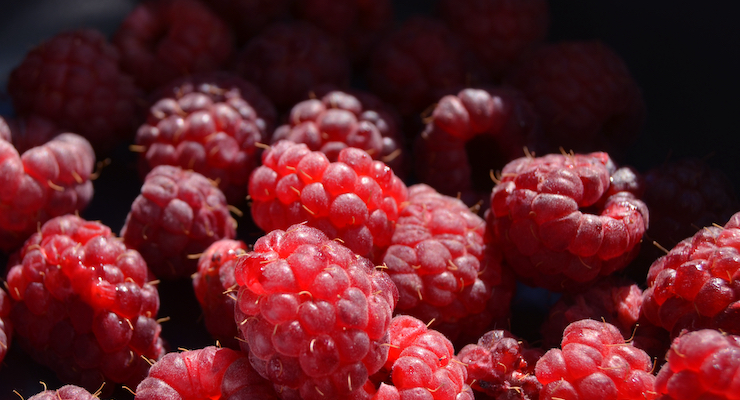12.22.21
Adding cocoa flavanols and anthocyanins from red berries to the diet could potentially be an effective strategy to support neurocognitive function, a new double-blind, parallel-group study published in the journal Nutrients found.
Flavanols and anthocyanins have long been studied for their strong antioxidant activity and potential role in age-related diseases impacting a dramatically-growing population of those over the age of 65. In response to the reality that there will be more elderly people than ever before, research has fixated upon nutritional strategies which could offset the harmful effects of aging on brain and vascular health.
“Scientific evidence suggests that both flavanols and anthocyanins have neuroprotective qualities,” the authors of the study said. “Flavonoids, in general, seem to enhance neuronal function, protect vulnerable neurons, and stimulate neuronal regeneration via interaction with neuronal intracellular signaling pathways […]”
In the present study, conducted by researchers in Spain, a total of 60 volunteers between the ages of 50 and 75 years old were recruited to take part in a dietary intervention study, in which they were randomized to consume either their standard diet, a cocoa powder, a red berries mixture, or both cocoa and red berries.
They were assessed for two biomarkers of cognitive health – brain-derived neurotrophic factor (BDNF, a molecule involved in changes related to learning and memory), and nerve growth factor receptor (NGF-R, a marker of growing and developing neurons), and also completed a battery of cognitive tests both at baseline and after 12 weeks of daily consumption of their various interventions.
The researchers relied on outcomes in the Verbal Learning Test, the Spatial Recall Test, the Wechsler Adult Intelligence Scale 3 and 4, the STROOP Task, and the Tower of London Test.
In all of the groups which received an intervention, there was a significant reduction in the time needed to start and finish the Tower of London test, a measure of executive function, which was most pronounced in those who consumed both cocoa and red berries. Despite the improvement, no significant changes in BDNF or NGF-R were observed.
“Our study showed an improvement in executive function with the dietary intervention that failed to show an association with increased BDNF levels,” the authors of the study said. “One should take into consideration that flavonols and anthocyanins not only directly affect neurons, as multiple studies have shown in the past, but that the consumption of foods rich in flavonoids improves the glucoregulatory control via improved insulin sensitivity and cerebral blood flow by increasing the bioavailability of nitric oxide, resulting in improved cognitive performance.”
Flavanols and anthocyanins have long been studied for their strong antioxidant activity and potential role in age-related diseases impacting a dramatically-growing population of those over the age of 65. In response to the reality that there will be more elderly people than ever before, research has fixated upon nutritional strategies which could offset the harmful effects of aging on brain and vascular health.
“Scientific evidence suggests that both flavanols and anthocyanins have neuroprotective qualities,” the authors of the study said. “Flavonoids, in general, seem to enhance neuronal function, protect vulnerable neurons, and stimulate neuronal regeneration via interaction with neuronal intracellular signaling pathways […]”
In the present study, conducted by researchers in Spain, a total of 60 volunteers between the ages of 50 and 75 years old were recruited to take part in a dietary intervention study, in which they were randomized to consume either their standard diet, a cocoa powder, a red berries mixture, or both cocoa and red berries.
They were assessed for two biomarkers of cognitive health – brain-derived neurotrophic factor (BDNF, a molecule involved in changes related to learning and memory), and nerve growth factor receptor (NGF-R, a marker of growing and developing neurons), and also completed a battery of cognitive tests both at baseline and after 12 weeks of daily consumption of their various interventions.
The researchers relied on outcomes in the Verbal Learning Test, the Spatial Recall Test, the Wechsler Adult Intelligence Scale 3 and 4, the STROOP Task, and the Tower of London Test.
In all of the groups which received an intervention, there was a significant reduction in the time needed to start and finish the Tower of London test, a measure of executive function, which was most pronounced in those who consumed both cocoa and red berries. Despite the improvement, no significant changes in BDNF or NGF-R were observed.
“Our study showed an improvement in executive function with the dietary intervention that failed to show an association with increased BDNF levels,” the authors of the study said. “One should take into consideration that flavonols and anthocyanins not only directly affect neurons, as multiple studies have shown in the past, but that the consumption of foods rich in flavonoids improves the glucoregulatory control via improved insulin sensitivity and cerebral blood flow by increasing the bioavailability of nitric oxide, resulting in improved cognitive performance.”




























